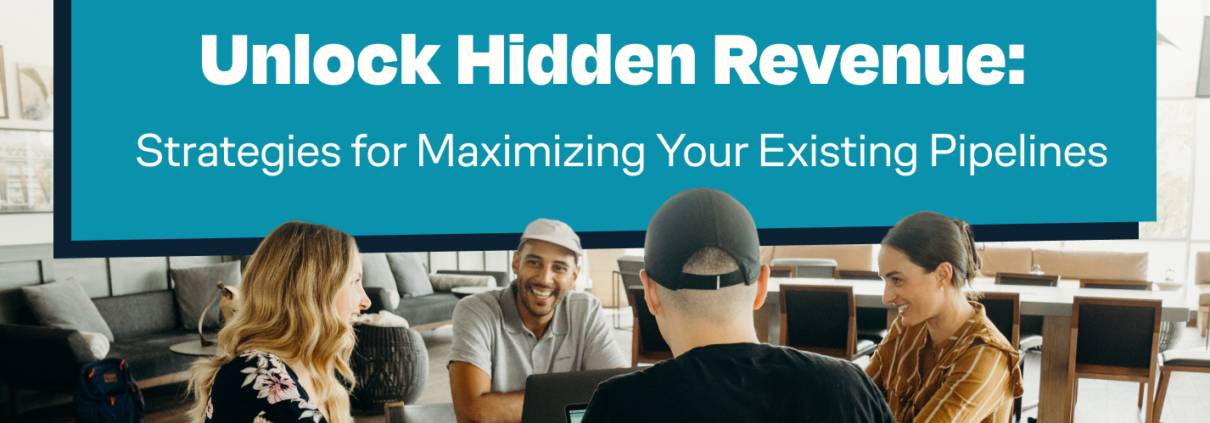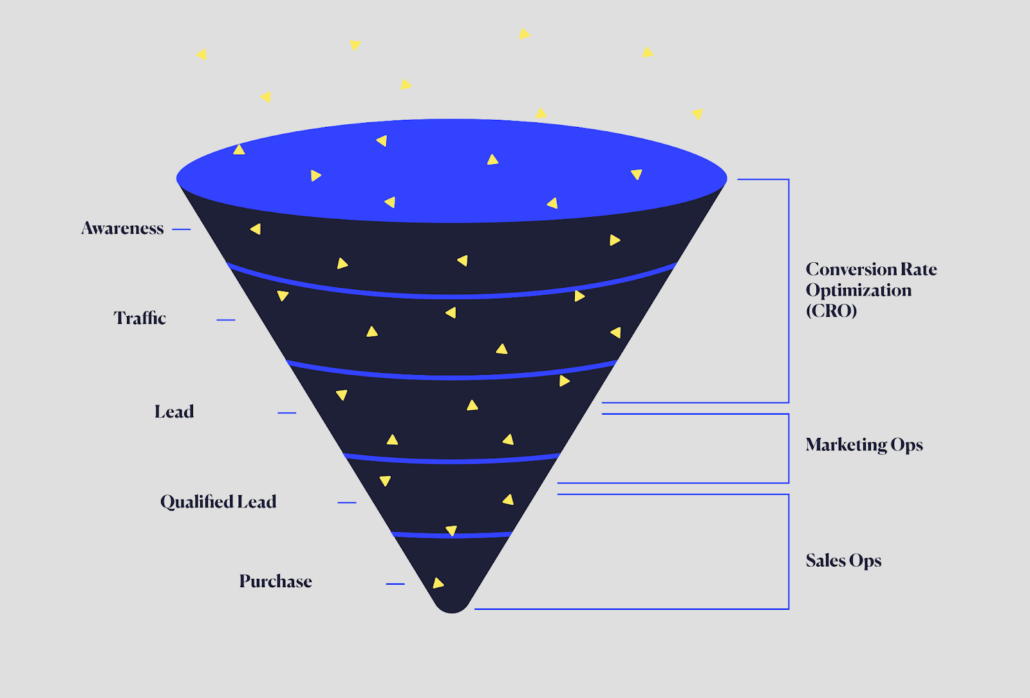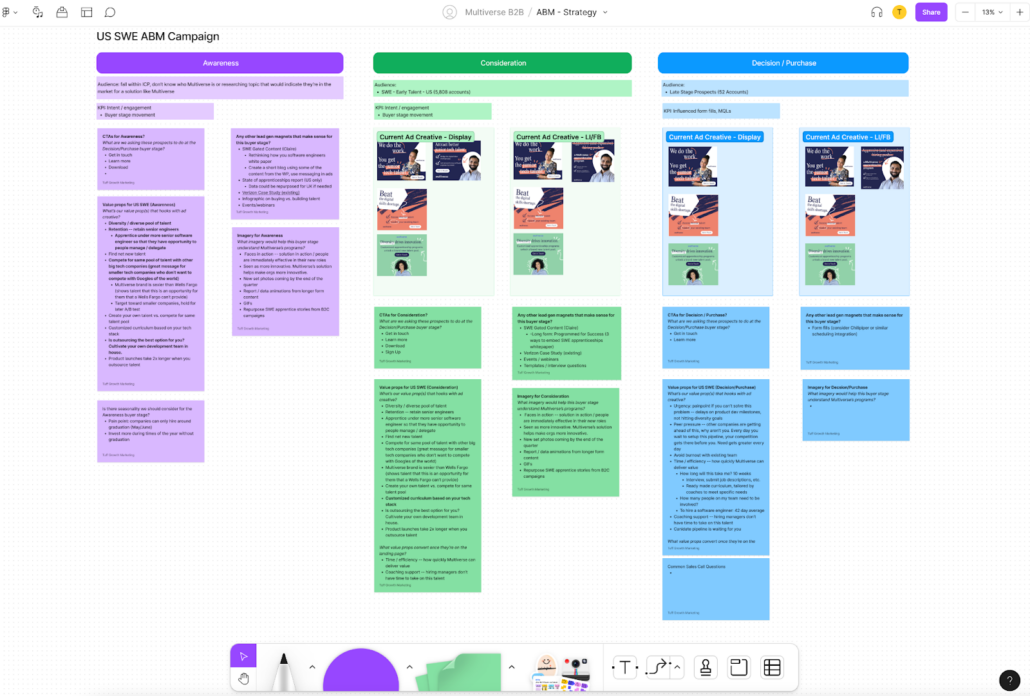Unlocking Hidden Revenue: Strategies for Maximizing Your Existing Pipeline
As marketers, we’re used to navigating budget cuts and operating with reduced resources. But we’re still accountable to hitting revenue targets.
In many organizations, revenue growth is synonymous with new customer acquisition strategies. Sure, acquiring new customers is an important nut to crack – but it isn’t the only way to grow revenue. As a growth marketing agency, we’ve collaborated with several businesses that need to strike a balance between attracting new customers within their target market and re-engaging with leads they previously acquired but failed to convert.
When budgets are tight and you’re looking for ways to make the resources you do have go further, your leaky funnel and dormant leads should be the first place you look.
In this blog, we’ll dig into ways we’ve partnered with brands as their growth marketing agency to identify ways to generate revenue from leads they’ve acquired in previous campaigns.
Table of Contents
- Metrics and data you need to see if you have a leaky funnel
- Conducting a comprehensive analysis of your customer database
- Segmenting your customer database based on intent and dormancy
- Exploring effective methods for re-engaging dormant leads
Start by finding the leaks in your funnel
If a qualified MQL or SQL didn’t actually convert, you can oftentimes point to a leaky funnel. If you’re building strategies to re-engage dormant leads, it’s important to fix your funnel first.
Otherwise, you’ll just have this perpetual bucket of folks who are primed and ready to buy, but didn’t because aspects of the buyer journey are still broken, counter intuitive, or just plain confusing.
You can’t fix your leaky funnel without thinking about optimizing conversion on your website with CRO testing. If you split your funnel in half, there are technically two areas you can focus on:
- Reducing friction on your site so more of your traffic becomes a lead (AKA Conversion Rate Optimization)
- Reducing friction in your sales funnel so more leads become customers (AKA Sales & Marketing Ops)
In this post, we’re focused on the latter. But you can check out how we approach conversion rate optimization here.
Analyze your tech stack
As an agency partner that’s been in nearly every marketing tech stack combo you can imagine, this is often one of the first places we look to identify low hanging fruit. If we’re recommending that you scale spend, we want to make sure our systems are poised to convert as much of that traffic as possible.
We see so many complicated tech stacks powered by automations and API integrations that connect multiple tools. Not only does this cause attribution nightmares (that we won’t get into in this post), but it also can cause a breakdown in how marketing qualified leads are added to your CRM.
I can’t tell you how many times we’ve found that speed to lead is slow, or leads just aren’t being routed to an SDR, because of a small technical error with how these tools are integrated.
This is when you put on your marketing operations hat to document the entire lead journey process, from form fill to closed won. Eight out of 10 times, we find the most success in simplifying the amount of tools in your tech stack.
Leading with the right value props
For most products and services, if a user enters your funnel they’re probably also vetting your competitors. Value props are often a product of brand marketing – which means that it’s common for value prop decisions to be rooted in subjective opinion rather than backed by solid data.
Are your tactics leading with the right value props to drive action and set you apart from competitors? Even the best-in-class brands can find ways to do a better job of this.
At Tuff, we use a message testing framework in our performance creative process to identify which value props resonate the most. This is only one of hundreds of ways you can figure out which value props you should be leading with, and at what stages of the funnel.
Oftentimes, we lean on customer interviews and focus groups to get feedback on which value props are stickiest. We’ll also work closely with SDRs – who get the most feedback in real-time from potential customers – to workshop messaging and content ideas at all stages of the buyer journey.
Tactically, that looks like a 45 minute working session with a Figma file whiteboard that helps facilitate a productive conversion with sales and CS, who have the most facetime with customers.
Reduce friction in the handoff to sales
Speed to lead is a buzzword in our industry, but so so important to closing deals. We’ve worked with sales ops to reduce the speed that sales reaches out to a qualified lead from 45 minutes to 15 minutes. The chances of conversion grew by over 88%.
How many touch points are too many touchpoints?
Sales and marketing can butt heads sometimes, and it’s often because they aren’t pointed toward the same goal – increasing revenue. When you adopt a growth marketing mindset, your marketing goals are revenue targets, just like sales.
Unfortunately, that’s not always the case. And that’s when we see organizations building a customer journey that has way too many touch points before a user is warm enough to actually buy.
When marketing is held accountable to lead volume (instead of a revenue target), we build a strategy around getting as many leads as possible – through content downloads, events, white papers, and e-books.
But a user who downloads a whitepaper probably isn’t ready to talk to a sales rep just yet. They might fit your MQL criteria, but you’ll end up annoying the user and wasting your sales team’s time if you pass along a lead before they’re ready to buy.
This is why we’re huge proponents of un-gating your content. This ultimately improves the user experience, helps with SEO, and makes sure that only leads that show the highest intent (like requesting a demo) are routed to sales.
How to approach re-engaging cold leads
Step 1: Analyze your current customer database
We live in a world where we have an overwhelming amount of data at our fingertips. With CRMs and other analytics tools, you can look at data from all kinds of angles to identify patterns, segments, and trends that can help shape your re-engagement campaign strategies.
Qualitative feedback reigns supreme
Identify MQLs that didn’t convert, and reach out to ask why. This kind of feedback loop is critical to improving all parts of your business – from marketing to sales and customer success. But it can be tricky to navigate. While simple in theory, it’s much easier to ask a brand evangelist to spend time giving you actionable feedback compared to a customer that didn’t convert.
That’s when an offer of some kind can be really useful. We’ve worked with teams who offer Amazon or DoorDash gift cards to lost MQLs who agreed to a quick 15 minute interview or fill out a survey. We focus on why they didn’t purchase our product or service or why they went with a competitor.
Splice and dice the data
Start by cutting the data in every way you can imagine. This part can be overwhelming, but with a little time and a few Excel pivot tables, you can clean really interesting insights that will strengthen and shape how you plan to tackle a winback campaign.
Here are a few ways we start organizing data to build customer insights:
- Which touchpoints have the highest drop off rates?
- Which channels require the most nurturing?
- Are there patterns when you cut the data by certain audience subsets (like age, location, job title, company size, etc.)?
- Is there any seasonality that should be considered?
- If you use content downloads for lead gen → are there patterns in the types of content that are most likely to convert?
Ultimately, this data analysis should guide how you plan to segment your list of dormant leads so you can craft messaging strategies that are unique to each user journey.
Step 2: Segmenting based on intent / dormancy
We see better results when we tailor our channels, tactics and messaging strategies based on level of intent. This is where all that data analysis you just did in Step 1 comes into play. Not only did you glean insights that shaped your overarching winback campaign strategy, but you also walked away with a thoughtful way to approach lead segmentation.
Depending on your brand and how many existing funnel entry points you have, you can approach list segmentation in a variety of ways. We’ve seen the most success segmenting lists by:
- Channel source at time of lead (Meta leads often need more nurturing than Google leads)
- Types of content downloaded
- Attended 3+ events vs. attended 1-2 events
- Leads that came from accounts within our TAM, but were the wrong job role or position
Step 3: Building a strategy unique to each segment
Once you’ve identified your segments, it’s important to build a messaging strategy that’s specific to each user. While the channels and tactics might be similar – email, push notification, SMS, retargeting, sales outreach – the messaging should be unique.
We worked with Dumpling – a grocery delivery app – to re-engage customers that had used their app in some capacity, but never became evangelical users. The three segments we identified were:
- Users who had ordered once, but never reordered
- Users that had placed 1-3 orders and hadn’t reordered in 2+ months
- Users that had signed up, but never placed an order
We worked with their team to identify value props, messages, and offers that might resonate the best with each segment, and crafted specific email and push notifications around it.
Step 4: Identify re-engagement campaign strategies and tactics
There’s a fine line between annoying a dormant lead and trying to re-engage them. When you segment your lists, you have to make sure you’re bringing value to their inbox. And you’re not just another spammy email headed to the trash.
There are a few ways to make sure your outreach is relevant. You should customize the details and exact language to each segment, but we typically bucket our messaging strategies into a few groups.
Build offers and discounts
It’s simple, and it works. If you’re trying to re-engage dormant leads, hit them with an offer or a discount. Here are a few ideas we’ve seen work well:
- Offer a free trial.
- If the math works out, offer a gift card if they book a demo.
- Build a unique discount code
- Offer free hand-on onboarding to implement the tool
- Offer a free analysis or consultation call (that helps prove why they need your product or service)
Sell new features
If your business sells a product, your product marketing team is likely rolling out new features all the time. As that happens, take a second to build an email campaign to send to leads that fell out of your pipeline.
A great example of this is some of the work with did with XXX
Sync up with event marketing
If your content team hosts virtual events, an easy way to re-engage dormant leads is to invite them to webinars, podcasts, and other conferences. Try to make sure that the events you send to each segment are hyper relevant. You don’t want to waste time – yours and your potential customers – promoting events that don’t fit.
Debunk fears and myths
Sometimes, especially in the B2B world, a lead doesn’t become a paying customer because they don’t have time to. Whether it’s a service or a product, it can take a significant amount of time to setup a new tool or system, and then train the rest of their team on how to use it.
In those instances, the dormant lead might need whatever solution your brand offers, but the obstacle preventing the transaction
We saw this with brightwheel, an app that helps early education childcare centers communicate with parents. Childcare directors are BUSY, and the thought of onboarding a new tools was overwhelming to them. Not because they didn’t need it – they desperately need an app to move their antiquated paper-based processes into the digital world. But because they couldn’t find the time in their day-to-day to implement it.
This was one of our top performing retargeting messages. We found that by leading with messages about how quick the tool is to set up, we were more likely to push leads from events and content downloads to demo requests and paying subscribers.
Channels for re-engagement campaigns
Once you’ve identified the right segments and built your messaging strategy, you have to decide on the right channels for re-engagement campaigns. Email’s the no-brainer, but we often see agencies focus on retargeting campaigns. That’s not wrong by any means – and it can be an effective additional touch point. But when a retargeting budget doesn’t fit within your CAC guardrails – we recommend starting first with owned channels.
Depending on your business model and tech stack, we’ve seen these channels be particularly effective for winback campaigns:
- SMS
- Push Notifications
- Sales Outreach
- Retargeting (when it makes sense – we’re not trying to spend a ton of ad dollars)
Ready to collaborate on how you can grow revenue within your existing pipeline? Schedule a consultation call with us!

Kristin is a senior growth marketer and COO at Tuff. After working in a variety of agency landscapes, Kristin found her way to Tuff to work with teams who make make marketing decisions rooted in data and tied to revenue growth. When she’s not building growth strategies or working with the Tuff team to improve our processes, you’ll find her chasing her two kiddos around the house or playing fetch with her dogs.









